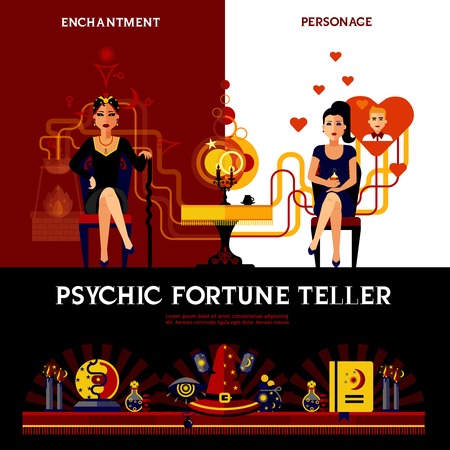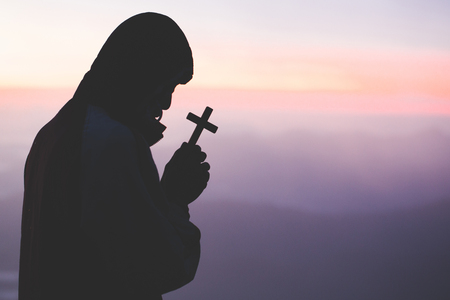Historical Encounters: Early Christianity and British Paganism
The meeting of Christianity and paganism in Britain stands as a profound chapter in the island’s spiritual heritage. When Christian missionaries first set foot on British soil during the late Roman period, they encountered a landscape rich with Celtic traditions, Druidic rites, and deeply rooted local beliefs. These early Christians, often arriving from Rome or Gaul, brought with them not only new religious doctrines but also new cultural norms and forms of worship that contrasted sharply with existing pagan practices. Initially, the introduction of Christianity was met with curiosity, resistance, and at times outright hostility. Pagan temples dotted the countryside, sacred groves were revered, and seasonal festivals marked the rhythms of daily life. The shift did not occur overnight; instead, it unfolded over centuries, with periods of tension interspersed by moments of negotiation and adaptation. Local leaders sometimes adopted Christian faith for political advantage or to maintain peace with rising powers, while others clung tenaciously to ancestral customs. This era witnessed both overt conflict—such as the destruction of pagan shrines—and more subtle forms of syncretism, where elements of old and new traditions blended together. The resulting transformation shaped not only religious practice but also art, law, and communal identity throughout Britain. Thus began a complex journey where Christianity and paganism would alternately clash and coexist, leaving an indelible mark on the spiritual tapestry of these isles.
2. Symbols and Rituals: Syncretism in Practice
The British Isles have long been a tapestry woven from threads of both Christian and pagan traditions, particularly evident in the symbols and rituals passed down through generations. When Christianity arrived on these shores, it did not entirely supplant the ancient customs but often absorbed and reinterpreted them. This process, known as syncretism, is perhaps most visible in the way festivals and ceremonies have merged, allowing communities to embrace both their ancestral heritage and new religious teachings.
Seasonal Festivals: From Pagan Roots to Christian Feasts
Many of Britain’s most cherished celebrations have their origins in pre-Christian times, yet today they are closely associated with the Christian calendar. The blending of these observances created a unique spiritual landscape where sacred meanings overlapped. Consider the following examples:
| Pagan Festival | Christian Equivalent | Shared Symbols/Rituals |
|---|---|---|
| Beltane (May Day) | Easter | Maypole dancing, floral crowns, fertility symbols (eggs, hares) |
| Samhain | All Saints’/All Souls’ Day | Bonfires, remembrance of the dead, costumes to ward off spirits |
| Yule (Winter Solstice) | Christmas | Evergreen decorations, feasting, gift-giving, candles/lights |
| Lughnasadh (Harvest Festival) | Lammas/Harvest Festival | Bread baking, sharing first fruits of the season, communal meals |
Pervasive Symbols and Their Meanings
The intertwining of faiths is also visible in the everyday symbols that adorn churches and homes across Britain. For instance, the Celtic cross marries the Christian symbol of salvation with the ancient sun wheel—an emblem of continuity and life. Similarly, churchyards often stand on sites once considered sacred by local tribes, linking past reverence for nature with present-day worship.
Legacy in Modern British Culture
This harmonious coexistence is not merely historical; it persists in modern customs such as wassailing apple trees at Christmas or lighting bonfires on Guy Fawkes Night—rituals that reflect both a respect for the turning seasons and a collective memory shaped by centuries of belief. Through these blended practices, Britons continue to honour both Christian teachings and the enduring spirit of their pagan ancestors.

3. Sacred Places: Transformation of Mystical Landscapes
Throughout the British Isles, landscapes once revered by Pagan communities for their spiritual resonance underwent profound transformation with the arrival of Christianity. This transition did not occur through abrupt erasure but rather through a nuanced layering of faiths and meanings. Many Christian churches, abbeys, and holy wells were deliberately established on sites that had long been significant in pre-Christian traditions—ancient stone circles, sacred groves, and springs imbued with folkloric power. In doing so, early Christian leaders sought not only to sanctify these places anew but also to gently guide local populations towards the new faith without severing them from their ancestral roots.
At Glastonbury, for example, legends weave together stories of Joseph of Arimathea and the Holy Grail with far older Celtic myths associated with Avalon and the Isle of the Dead. Wells dedicated to Christian saints often occupy locations where water had previously been venerated as a source of healing or prophecy by Druidic priests. The abbeys rising across Yorkshire or the West Country frequently stand atop hills and promontories that ancient Britons regarded as thresholds between worlds—a subtle yet powerful continuation of the landscape’s mystical importance.
This spiritual palimpsest speaks to both conflict and coexistence. While Christianity sometimes sought to suppress older practices, it also absorbed and reinterpreted them. By overlaying Christian meaning upon Pagan foundations, these sacred places became repositories of layered devotion—a testament to the resilience of tradition and the enduring human quest for connection with the numinous.
4. Clash or Cohesion: Legal and Social Perspectives
The encounter between Christianity and paganism in Britain was not solely a matter of theology or personal belief, but also deeply entwined with law and communal norms. The legislative response to pagan practices, alongside prevailing social attitudes, shaped the ways in which these traditions clashed or coexisted throughout history.
Legal Instruments: Suppression and Accommodation
From the early medieval period onwards, a succession of legal measures was enacted to curb pagan rites. These ranged from the synods issuing decrees against “heathen” customs to royal edicts criminalising certain festivals or forms of worship. Nevertheless, the application and intensity of these laws often varied by region and era, reflecting both official intent and local realities.
| Period | Legislation | Effect on Pagan Practices |
|---|---|---|
| Anglo-Saxon Era | Synodical bans on sacrifices and “idolatry” | Pagan rituals pushed underground; partial integration with Christian feasts |
| Norman & Medieval England | Laws against “witchcraft” & heresy | Pagan symbols demonised; folk customs persist in rural communities |
| Tudor & Stuart Periods | Witchcraft Acts (1542–1736) | Persecution intensifies; eventual shift towards tolerance by 18th century |
Communal Attitudes: Policing and Syncretism
Beyond statutes, communal attitudes played a crucial role in determining how strictly pagan customs were policed or permitted. In some villages, local clergy tolerated—or even incorporated—certain seasonal celebrations and folklore into parish life, recognising their deep roots within the populace. Elsewhere, suspicion and denunciation prevailed, leading to ostracism or legal proceedings for those who persisted in non-Christian rites.
The Balancing Act: Tradition versus Orthodoxy
This dynamic produced a spectrum from conflict to cohesion. In places where the Church’s presence was strong and reformist zeal ran high, suppression could be fierce. Conversely, in more isolated communities or during periods of religious leniency, traditional beliefs found new expression under a Christian veneer—such as maypole dancing recast as part of church festivals or sacred wells being rededicated to saints.
A Living Legacy
The historical interplay between legislation and local sentiment has left an enduring legacy on British mystical traditions. Today, echoes of this complex negotiation can be seen in the country’s tolerant approach to spiritual diversity—a testament to centuries spent balancing law, faith, and community identity.
5. Modern Expressions: Revival and Reconciliation
In recent decades, Britain has witnessed a remarkable resurgence of interest in pagan and mystical traditions. This revival is not merely an echo of ancient rituals but a living movement that continues to shape the spiritual landscape of the nation. From the rolling hills of Glastonbury, where modern Druids gather at solstice, to urban enclaves where Wiccan covens meet under the city’s lights, contemporary Britons are exploring pathways once suppressed or hidden. At the same time, many Christians are engaging in open dialogue with these revived traditions, seeking common ground while respecting differences.
The Contemporary Pagan Revival
The late twentieth and early twenty-first centuries have seen paganism move from the margins to become one of the fastest-growing spiritual movements in Britain. Influenced by environmental awareness, feminism, and a desire for direct experience with the sacred, new generations turn to practices such as Druidry, Heathenry, and Witchcraft. Public celebrations of seasonal festivals—such as Beltane on Edinburgh’s Calton Hill or Samhain gatherings in Somerset—demonstrate how these traditions have re-entered mainstream consciousness. Yet, this revival is often less about returning to a literal past than reimagining ancient wisdom for modern needs.
Christian Responses and Interfaith Dialogue
The revival of pagan practices has prompted thoughtful responses from Christian communities. Whereas previous centuries saw outright opposition or attempts at conversion, many present-day churches adopt a more nuanced approach. Interfaith groups now facilitate respectful conversations between Christians and pagans, focusing on shared values such as stewardship of the earth and community wellbeing. Pilgrimages to sacred sites—like Stonehenge or Iona—are sometimes undertaken together, fostering a spirit of mutual respect rather than rivalry.
Reconciliation Through Shared Mysticism
Significantly, there is growing recognition that both Christian mysticism and revived paganism offer paths toward personal transformation and connection with the divine. Practices such as contemplative prayer in Christian circles and meditation within pagan groups reveal common aspirations for inner peace and transcendence. Some individuals even weave elements from both traditions into their spiritual lives, creating a tapestry that honours their heritage while embracing pluralism.
Thus, in today’s Britain, Christianity and paganism no longer exist solely in conflict; instead, they coexist within a vibrant mosaic of beliefs. This renewed engagement invites all seekers—whether rooted in church pews or dancing around stone circles—to explore deeper questions together, forging a future where ancient divides give way to understanding and reconciliation.

